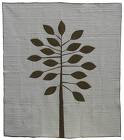



A parachute is a device used to slow the motion of an object through an atmosphere by creating drag, or in the case of ram-air parachutes, aerodynamic lift. Parachutes are usually made out of light, strong cloth, originally silk, now most commonly nylon. Parachutes must slow an object's terminal vertical speed by a minimum 75% in order to be classified as such.
Depending on the situation, parachutes are used with a variety of loads, including people, food, equipment, space capsules, and bombs.
Drogue chutes are used to aid horizontal deceleration of a vehicle (a fixed-wing aircraft, or a drag racer), or to provide stability (tandem free-fall, or space shuttle after a touchdown).
The word "parachute" comes from the French para, meaning "to prepare for" or "to protect against," originally from the Latin parare, and chute, the French word for "fall," and it was originally coined, as a hybrid word which meant literally "that which protects against a fall," by the French aeronaut François Blanchard (1753-1809) in 1785. Some modern parachutes are classified as semi-rigid wings, which are maneuverable and can make a controlled descent to break on impact with the ground.


Depending on the situation, parachutes are used with a variety of loads, including people, food, equipment, space capsules, and bombs.
Drogue chutes are used to aid horizontal deceleration of a vehicle (a fixed-wing aircraft, or a drag racer), or to provide stability (tandem free-fall, or space shuttle after a touchdown).
The word "parachute" comes from the French para, meaning "to prepare for" or "to protect against," originally from the Latin parare, and chute, the French word for "fall," and it was originally coined, as a hybrid word which meant literally "that which protects against a fall," by the French aeronaut François Blanchard (1753-1809) in 1785. Some modern parachutes are classified as semi-rigid wings, which are maneuverable and can make a controlled descent to break on impact with the ground.


Nylon
Parachute canopies have to withstand high wind pressures, especially when operating at altitude and nylon is a common choice of material in the manufacture of canopies. Nylon is completely windproof and has the added benefits of being lightweight, readily sourced and inexpensive. The strength, flexibility and light weight of nylon also make it ideal as the material used in the straps of the parachute harness.
Kevlar
Some parachutes canopies are being made from a newer material, Kevlar. A major benefit of Kevlar is its extreme strength, which means it is used in the manufacture of bullet-proof clothing. Kevlar, like nylon, is a man-made fiber. It is highly resistant to heat, making it flame-resistant, and does not lose its strength and shape at high temperatures. Kevlar parachutes maintain their tensile strength well even when left folded for extended periods, as was found during tests done for the U.S. Department of Energy.
Silk
Early parachutes canopies were made of canvas, but silk was later utilized because it is thinner, better resistant to wind, resistant to fire and much easier to fold. Silk was used as early as the 1790s when parachute pioneer Jean-Pierre Blanchard began to make parachute canopies out of the fabric. Silk remained a popular material in parachute manufacture up until World War II, when silk imports became expensive and difficult to obtain, leading to the development of nylon parachute canopies
Parachute canopies have to withstand high wind pressures, especially when operating at altitude and nylon is a common choice of material in the manufacture of canopies. Nylon is completely windproof and has the added benefits of being lightweight, readily sourced and inexpensive. The strength, flexibility and light weight of nylon also make it ideal as the material used in the straps of the parachute harness.
Kevlar
Some parachutes canopies are being made from a newer material, Kevlar. A major benefit of Kevlar is its extreme strength, which means it is used in the manufacture of bullet-proof clothing. Kevlar, like nylon, is a man-made fiber. It is highly resistant to heat, making it flame-resistant, and does not lose its strength and shape at high temperatures. Kevlar parachutes maintain their tensile strength well even when left folded for extended periods, as was found during tests done for the U.S. Department of Energy.
Silk
Early parachutes canopies were made of canvas, but silk was later utilized because it is thinner, better resistant to wind, resistant to fire and much easier to fold. Silk was used as early as the 1790s when parachute pioneer Jean-Pierre Blanchard began to make parachute canopies out of the fabric. Silk remained a popular material in parachute manufacture up until World War II, when silk imports became expensive and difficult to obtain, leading to the development of nylon parachute canopies
All fabrics /materials are delivered direct from the manufacturer .If you have any further inquiries please do not hesitate to contact us.


No comments:
Post a Comment